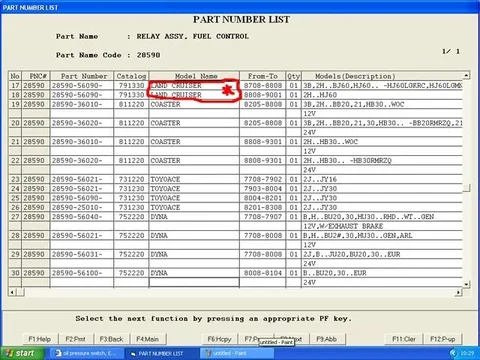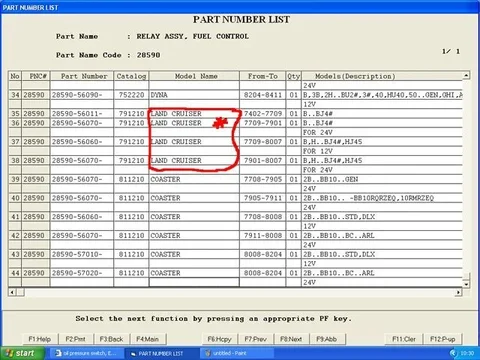First of all, the injection pump is very rarely the cause of fuel system problems. The EDIC is another matter.
You didn't mention why you needed to use starter fluid to get the engine to fire up, however, is this normally the case? (if so, what sort of shape are your injector nozzles in?) Since this is unclear, I'll first walk through the basic things to check.
Let's assume that the engine normally turns over when you turn the key...
If the engine doesn't start, then first thing to check is whether fuel is getting to the fuel injection nozzles; if so, then check to see if fuel is getting to the injector pump - disconnect inlet hoses to the feed pump and feed fuel from a separate container directly to the feed pump. If the engine starts, then the problem is with the sedimenter or fuel line from the tank. If the engine doesn't start, then check the fuel filter or line between feed pump and injection pump. If normal, the feed pump or injection pump is faulty.
next possibility to examine: fuel leakage from any of the injection pipes. Make sure the pipe fixing nuts are down tight.
Next: check to see if you have an inoperative pre-heating system: with the starter switch to the ON position and the glow indicator illuminated, check that there is voltage supplied to the glow plug a few seconds later. After that, voltage should drop to about 1/2. If there is no initial voltage, check for battery voltage at the + side of the glow plug current sensor (the Resistor side). If okay, replace sensor. If no voltage, the main glow relay is faulty and should be replaced.
If there is no 1/2 voltage following the full voltage period, check for battery voltage on + side of the Resistor (intake manifold side). If okay, then replace the resistor. If no voltage, the secondary glow relay is dead and should be replaced.
Finally, check the glow plugs themseves for resistance.
Okay, those are the basic steps to check when having starting problems.
Getting back to when you first turn the key - does the indicator light for 'Glow' come on? If not, and leaving the key in the same position, have you checked the ENGINE and GLOW fuses? If fuses and glow indicator bulb are good, then check for battery voltage at terminal 3 of the pre-heating timer connector (on the wire harness side). If you have voltage, the pre-heating timer is faulty and should be replaced.
Let's assume that the 'Glow' light comes on as normal, which would be for about 2 seconds at an ambient temp of 68˚F, longer when colder. With the ignition switch to ON, check for battery voltage to terminal 1 of the Pre-heating timer (looking at the timer terminal end, 1 is at the upper right corner). No voltage, check that there is 1v between terminals 9 and 12. If not, replace glow plug current sensor, if there is voltage, then the timer is faulty.
If there is voltage to terminal 1 of the pre-heating timer with the ingnition s/w to ON, check to see if voltage at terminal 1 is terminated after engine is started. If not, then either there is a fault with the charging system; if okay, then again the timer is pooched.
--> Now, from your description, it sounds like the problem might be revolving around the good old EDIC system. It is best to check it systematically. To check the operation of the EDIC control motor, get a helper to turn the ignition switch while you watch the EDIC motor directly. First disconnect the connector from the oil pressure switch (NOT the oil pressure sender). When the ignition switch is turned to ON, the fuel control motor lever and pump adjusting lever should be positioned between the marks on each of the two components.
When the ignition is turned to START, the pump adjusting lever should move to the over-injection position (the EDIC motor will draw the lever towards itself, about 78˚away from the furthest swing in the opposite direction, which is STOP).
After starting the engine, the pump adjusting lever should return about halfway back. This is the 'drive' position.
When the ignition switch is turned to OFF, the pump adjusting lever should move all the way over (i.e., the rod is being pushed away from the EDIC motor) to the STOP position. The engine should stop.
Now, if all the above checks turned out well, start the engine and ground the oil pressure switch connector. The pump adjusting lever should move to the STOP position.
Finally, the oil pressure switch itself: check that there is continuity with the engine stopped. Check that there is no continuity with the engine running (allow 45 seconds or so from a cold start before checking). If operation is not correct. replace the switch.
It sounds like you didn't do this engine and wiring swap yourself, which unfortunately leaves you a fair bit more in the dark about how some of the parts work and what goes where. Have you obtained a Toyota 2H engine service manual? Very helpful.
Good luck!





